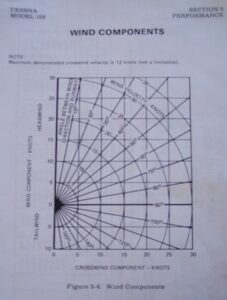Explain the precautions to be taken when:
a) Inserting data with the keypad.
b) operating/reading the unit while maintaining a proper lookout.
c) operating/reading the unit in marginal weather conditions.
Data entry can be made worse due to the small size of some units – pressing the wrong key is not unusual, and extra care must be taken to ensure accurate information is fed into the GPS.
Rubbish in = Rubbish out
The pilot must ensure that a proper LOOKOUT is maintained at all times during the flight, and that they do not fixate on part or parts of the GPS.
With large screens displaying lots of information, it can be very easy for the pilot to become fixated on the screen with information overload.
When operating GNSS units in marginal weather conditions, the pilot must ensure they only briefly look at the screen whilst flying, and maintain a good lookout.
But above all else…
AVIATE, NAVIGATE, COMMUNICATE!
List the factors to be considered when selecting altitudes at which to fly in the cruise.
When selecting altitudes to fly in the cruise, you must take into account:
Terrain clearance (note spot highs in vicinity of your track)
Legal minimas – 500ft AGL or 1000ft ALG over built up areas
Airspace and Danger, Restricted and Military area considerations
VFR cruising levels (NOSE- North ODD +500ft, SOUTH Even + 500ft) up to 12,500ft
Weather/cloud/freezing level
Solve Mathematical Equations:
a) multiplication ( 2%);
b) division ( 2%);
c) proportion ( 2%).
When calculating equations on your flight computer, you are allowed a 2% margin for error.
This allows for errors arising from inaccuracies in measuring distance, bearings and aligning the scales.
6.26.4. Describe the method of indicating relief on a NZ Aeronautical Chart.
Relief on an aeronautical map is shown by colour shading. Areas with low terrain are generally green, where high peaks or points can be a darker shade, possibly brown or red.
This allows the pilot to quickly distinguish the local terrain without having to read over spot heights or numbers.

6.22.4(a) NZ Aeronautical Charts;
The NZ aeronautical charts contain information including airspace, aerodromes, latitude and longitude, heights, and ground features to name a few.
Aeronautical charts are used for navigation and reference to frequencies and airspace boundaries. A pilot cannot navigate or plan to fly anywhere without the proper and current charts.

Define:
a) Coordinated Universal Time (UTC);
b) Standard Time (NZST);
c) Daylight Time (NZDT).
Coordinated Universal Time, abbreviated as UTC, is the primary time standard by which the world regulates clocks and time.
The world has been divided into time zones annotated from A to Z and 0 – +12, eg: New Zealand Standard Time is +12.
The Greenwich Meridian is the Prime Meridian designated as Longitude 0 degrees E or 0 degrees West and has UTC as its Standard Time. Greenwich Mean Time was changed to UTC in 1985 – for practical purposes both can be considered identical.
New Zealand Standard Time (NZST) is 12 hours ahead of UTC
To avoid minor differences in Local Mean Time, i.e different meridians going through different areas of NZ the 180 degree meridian is used as the sole longitude reference for the entire country
New Zealand Daylight Time (NZDT) is 13 hours ahead of UTC
When Daylight Saving is in force, between the last Sunday in September and the first Sunday in April; clocks are advanced one hour = 13 hours ahead
6.14.2(b) Wind velocity (W/V);
Wind Velocity is a vector quantity, comprising of the wind speed and the wind direction.
The wind direction, is given as the direction the wind is blowing from.
Wind velocity is typically displayed with wind direction and then wind speed; 270/15 (270degrees 15 kts)
6.12.2(b) Altitude;
Altitude means the vertical height of an object, measured above mean sea level (AMSL)


